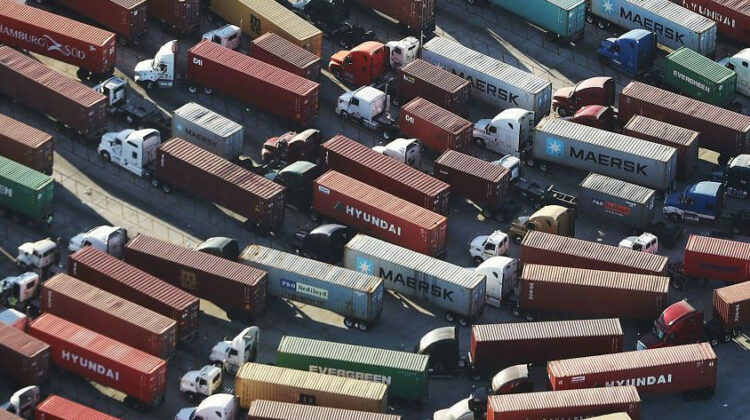
Five Rules for the Next Supply Chain Crisis

Supply chain interruption is not uncommon. Natural disasters, human errors, political unrest and climate change have always impacted procurement. Typically, these issues have been localized. When faced with an earthquake in Japan, businesses could reroute their supply chains to another factory in India or Bangladesh. The COVID-19 pandemic, however, has forced companies to face a new challenge: disruption on a global scale.
Businesses lost an estimated $28 trillion in 2020. Interrupted supply chains for necessities like toilet paper and bottled water, combined with a shift from in-store browsing to online purchasing, left many companies in the lurch. The experience has empowered many procurement leaders to ask themselves what they can do to avoid similar situations in the future.
Lack of data remains a major concern. More than 70% of procurement leaders say their supplier intelligence hasn’t improved enough to handle future disruptions, according to research by procurement software company TealBook. The following five rules for resilience can help.
Automate data. Relevant data is key to making good decisions when a supply chain breaks down. In times of crisis, manual data management is neither fast nor flexible. That’s why processes for consistent data refreshes and cross-checking should be automated. This can be done with machine learning (ML), artificial intelligence (AI), robotic process automatic (RPA) or optical character recognition (OCR).
Satellite images, cell phone messages and other geospatial data can locate supply chain problems, like a canal blockage or wildfire. When trouble arises, an automated system can spring into action and start looking for alternative suppliers or travel routes. AI tracks the disasters that geospatial data can’t, like political unrest or the spread of a contagious disease. Unlike a human waiting for news, the information gathering is nearly immediate. Relying on artificial intelligence over human instinct can thus increase accuracy and save your business valuable time.
Stick to your specialty. In times of crisis, lines of communication can break down. Leaders, especially in the C-suite, may feel pressured to make quick decisions to keep their company moving forward. Though decisive action is usually a good thing, a break in the supply chain isn’t the time for the CFO of a car company to make fast engineering decisions. Let your experts weigh in before making a move, rather than folding to the pressure to “get something out right now”.
But diversify where it counts. Many companies rely solely on China for their ability to manufacture goods at a low cost. As we know, China was the first country to experience Covid, and many plants were forced to shut down within the country. The effects of their shuttering impacted businesses around the globe, and led many to decide to become less dependent on China. In 2019, 96% of US based companies cited China as one of their top three manufacturing countries, but in 2021 that number had dropped to 77%.
Sourcing diverse suppliers should become an integral part of any contingency plan you choose to build. Whether your company works with a few dozen or a few thousand suppliers, there is always room to diversify. Thirty percent of procurement leaders fear they are missing out on supplier innovation as a result of failing to diversify supplier lists, according to Tealbook.
Supply chain diversification isn’t just about locating similar suppliers in advance. Customers expect uniformity of products, so it’s essential that manufacturers create identical products at similar speeds. Spreading manufacturing plants across multiple countries is a great way to minimize disruption from political unrest or high tariffs. With supply chains moving gradually out of China, other countries like Vietnam and Taiwan have correspondingly taken up the slack.
Improve visibility. The best way to deal with a crisis is to prepare ahead of time. Map out your supply chain so that you are clear on the details. A good map should include the locations of your supplier’s factories, what each plant makes, their operational status, and their inventory. If there is trouble on the ground, this can help you spot a drop in quality or identify “fake” products.
A study from MIT’s Sloan School of Management showed that companies with more supply chain visibility have more consumer trust. If a supplier is critical to you, and they are facing financial difficulties, consider agreeing to an advance or lower rate to make sure they stay in business. Your company might also consider offering a loan or investing money into their company if they are crucial to your operation.
Plan for shortages. Businesses should have a plan for shortages when a supply chain breaks down. If two products use the same part but it’s in short supply, it’s good to know which product takes priority ahead of time. When customers expect an item and don’t receive it, the result is a negative experience that can affect your brand down the road. Example of strategies for handling customer demand during a shortage are:
- Altering products. This could include diluting or reducing the amount offered, for example selling boxes of cereal that are only 80% full.
- Raising prices. By increasing the price for products that are in low supply, your business can encourage customers to purchase a cheaper alternative. For example, a furniture business might raise the price of their leather couch model, thus pushing customers to choose another version in pleather.
- Creating a waitlist. Absence makes the heart grow fonder, and in some cases a lack of availability can actually benefit your brand by making it exclusive. A digital email sign up increases customer engagement and boosts purchasing when your product is restocked.
New and unexpected crises are inevitable. The best way to create a more flexible and resilient supply chain is by developing contingency plans and managing data through automated processes. By establishing a plan of attack and relying on reliable data, companies can thrive even when their supply chain is disrupted.

